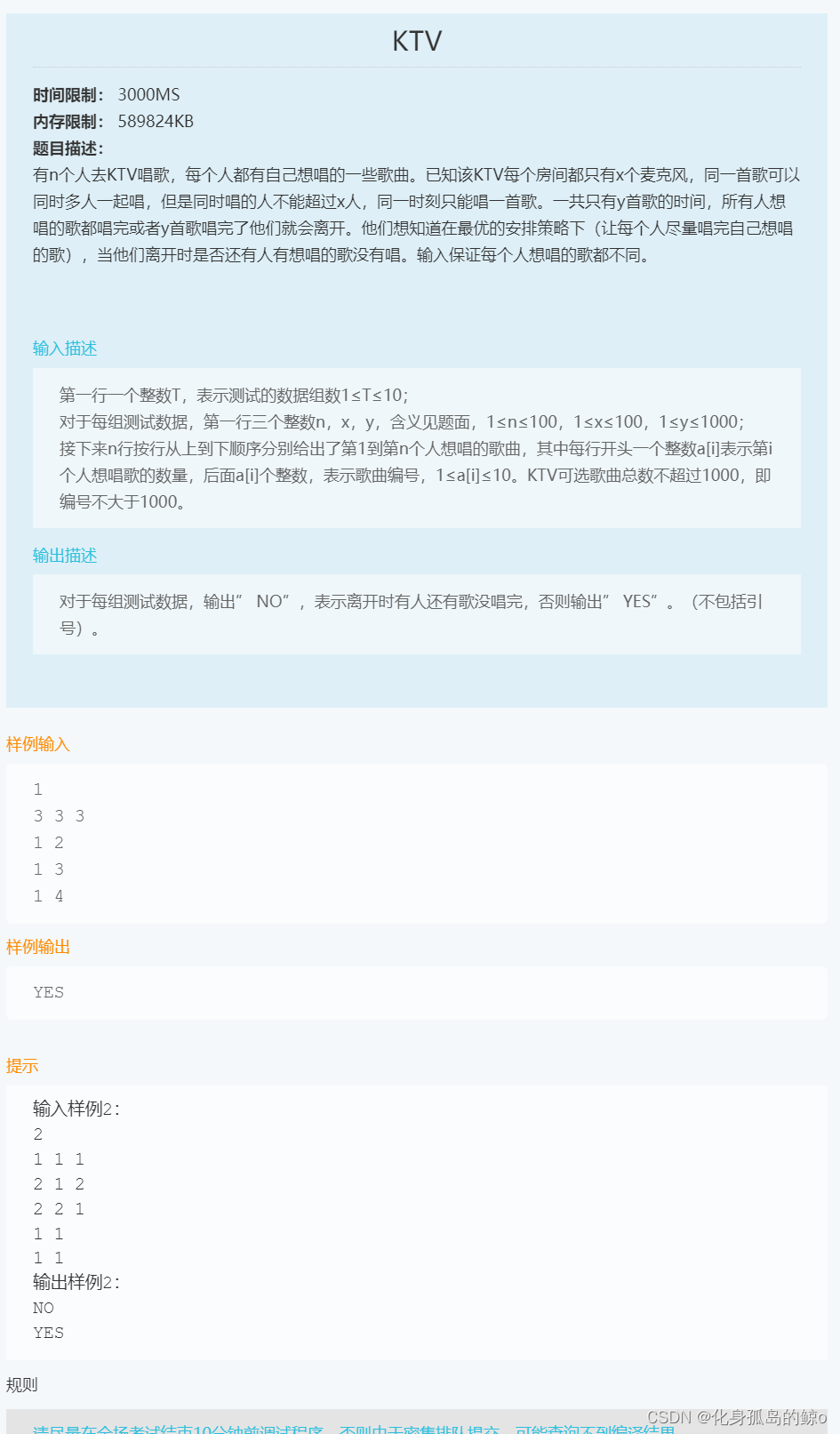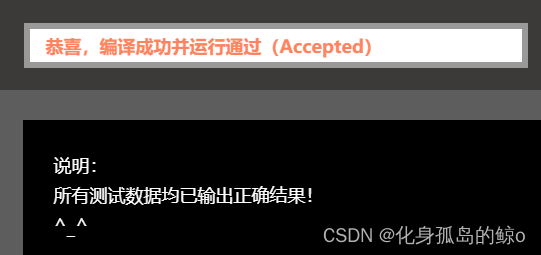题目

思路
贪心。
首先用nums数组记录想唱每首歌曲的人数,最优策略肯定是选择"最火"的那首歌曲来唱,也就是满足最多人需求的那首歌曲,所以我们对nums数组按人数大到小排序,每次选择一首歌曲,然后更新nums[i]:
nums[i] = nums[i] - min(想唱当前歌曲的人数, x)
直到唱完所有y首歌曲,如果此时nums数组已经全部为0,说明所有人的需求都满足了,输出‘YES’,否则输出‘NO’。
AC代码
(1)排序
import functools
class Song:
def __init__(self, num=0, song_id=0):
self.num = num
self.song_id = song_id
def cmp(song1 ,song2):
return song2.num - song1.num
T = int(input())
for _ in range(T):
n, x, y = [int(i) for i in input().split()]
song_list = []
# 记录想唱每首歌曲的人数
nums = [0] * 1005
for _ in range(n):
a = [int(i) for i in input().split()]
for i in range(1, len(a)):
nums[a[i]] += 1
for i in range(1005):
if nums[i] != 0:
song_list.append(Song(nums[i], i))
song_list.sort(key=functools.cmp_to_key(cmp))
cnt = 0 # 当前唱的歌的数量
res = True
while cnt < y:
song = song_list[0]
tmp = min(song.num, x)
nums[song.song_id] -= tmp
song.num -= tmp
# 需要重新进行排序
song_list.sort(key=functools.cmp_to_key(cmp))
cnt += 1
for item in song_list:
if nums[item.song_id] > 0:
res = False
break
print('YES' if res == True else 'NO')
(2)使用优先队列
import heapq
class Song:
def __init__(self, num=0, song_id=0):
self.num = num
self.song_id = song_id
class My_PriorityQueue(object):
def __init__(self):
self._queue = []
self._index = 0
def push(self, item, priority):
"""
队列由 (priority, index, item) 形式组成
priority 增加 "-" 号是因为 heappush 默认是最小堆
index 是为了当两个对象的优先级一致时,按照插入顺序排列
"""
heapq.heappush(self._queue, (-priority, self._index, item))
self._index += 1
def pop(self):
"""弹出优先级最高的对象"""
return heapq.heappop(self._queue)[-1]
def qsize(self):
return len(self._queue)
def empty(self):
return True if not self._queue else False
T = int(input())
for _ in range(T):
n, x, y = [int(i) for i in input().split()]
nums = [0] * 1005
pq = My_PriorityQueue()
for _ in range(n):
a = [int(i) for i in input().split()]
for i in range(1, len(a)):
nums[a[i]] += 1
for i in range(1005):
if nums[i] != 0:
song = Song(nums[i], i)
pq.push(song, song.num)
cnt = 0 # 当前唱的歌的数量
while not pq.empty() and cnt < y:
song = pq.pop()
tmp = min(song.num, x)
nums[song.song_id] -= tmp
song.num -= tmp
pq.push(song, song.num)
cnt += 1
res = True
for i in range(1, 1005):
if nums[i] > 0:
res = False
break
print('YES' if res == True else 'NO')
结果
